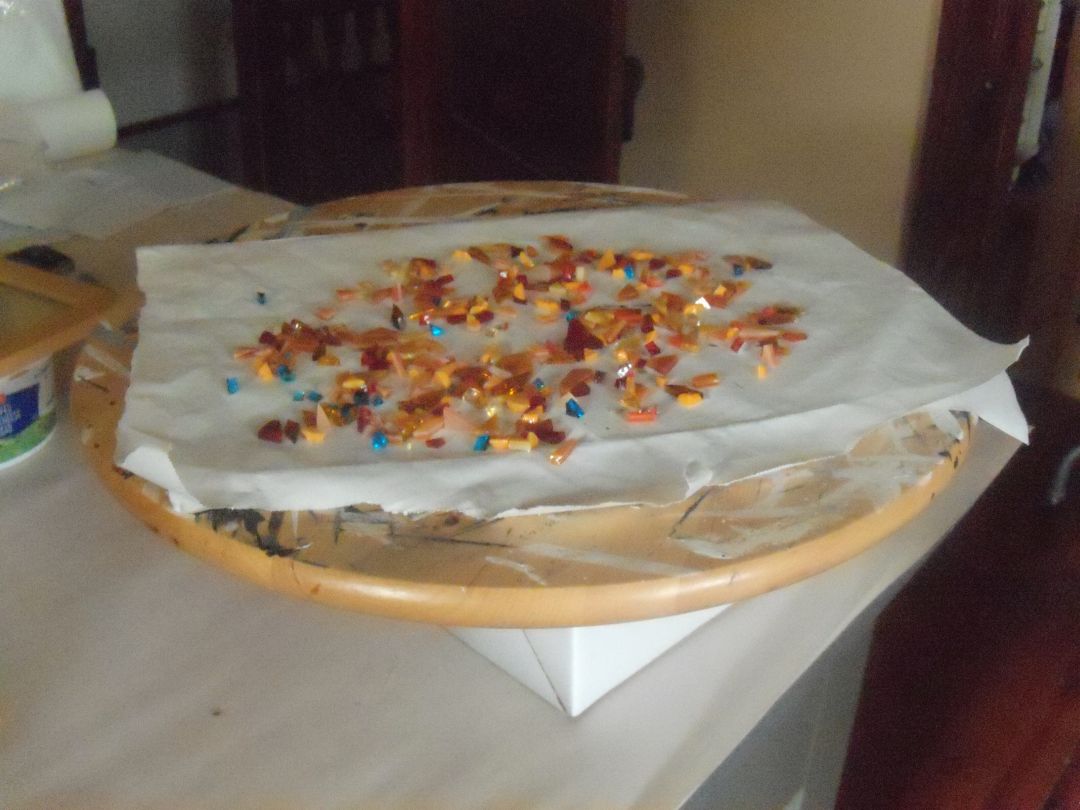I once took a collage workshop where an array of beautiful handmade paper was spread on every surface, and we could choose which sheets we wanted to work with. When we finished the first collage, the instructor then told us to gather all the scraps left over, and use these to make another collage. After the initial spike of anxiety, this challenge had a kind of thrill, as I worked within limits, spurring on my creativity. I liked the 2nd collage even more than the first one, and it was satisfying to use the scraps, the leavings, and create something new. I keep the two collages in my studio(1st one on the right, 2nd one on the left), a reminder of two kinds of working–one out of an abundance of materials, an array on every surface, and another out of sparseness. Too few choices can lead to a paucity, a deficit, but too many choices can lead to overwhelm.
In making mosaics, I create a lot of fragments. The nature of cutting glass, and tile, is like sculpting or woodcarving, paring away the material until the form is revealed. Fortunately in mosaic, the fragments are every bit as valuable as the original uncut glass or tile. For a couple years I saved all the tiniest bits, because I hated to imagine throwing them out. Then one day I noticed that I had enough to cover a surface, and I was using them in delight. I opened an tin of jagged scraps, non-linear ones, and set myself the challenge of making a mandala with them. I used only fragments in the center, and then relented and let myself cut some larger pieces for the border. My definition of “large” is still quite small, at least according to my husband. Working with these scraps must be akin to scrappy quilts, crazy quilts, all the ways to use up the stash of small pieces, and make something new.
Over at Stratoz:




One comment